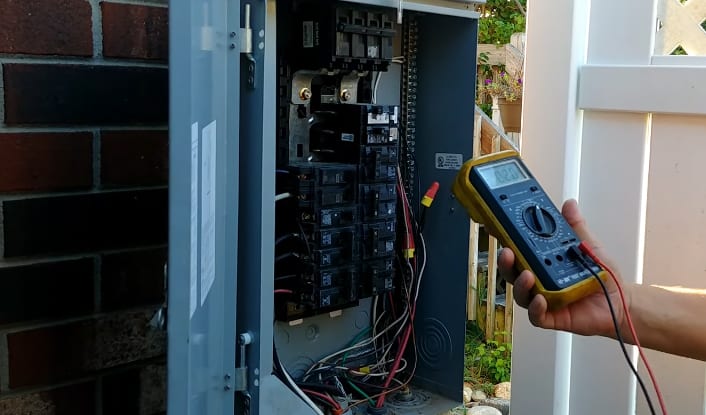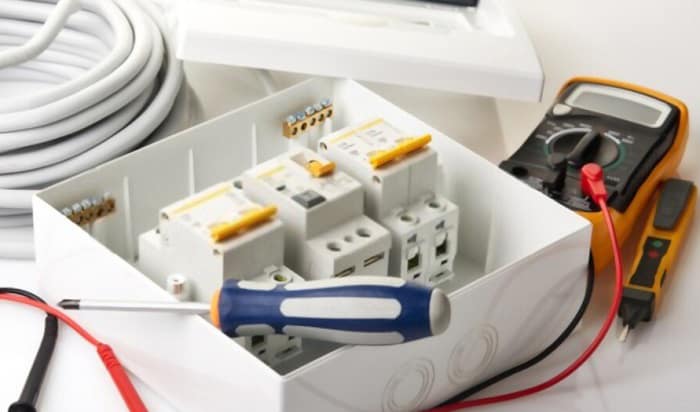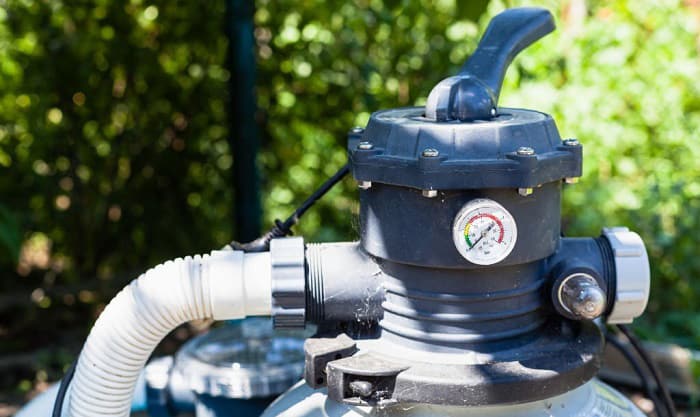A property with a swimming pool should install a GFCI pool breaker for the structure’s pump. Now you’re wondering, how to wire a GFCI breaker for pool pump?
Take note that this is typically a DIY-friendly job. But it’s important not to miss out on important details.
Continue reading to know a step-by-step guide on how to complete this task. Doing so should minimize the risks of costly mistakes.
Table of Contents
Step-by-Step Guide
What to Prepare:
- Breaker diagram: A GFCI circuit breaker wiring schematic should help identify which switch bracket connects to the pool pump.
- Pool GFCI breaker
- Screwdriver: A pool pump GFCI requirement to help secure the wires to the circuit breaker. You can also use this tool to remove the wires from an old GFCI breaker.
- Digital multimeter: This tool helps you test the circuit breaker to see if it’s receiving power from the mains.
Step #1: Locate the Electrical Service Panel
The pool pump’s circuit breaker is typically inside an electrical service panel. This fixture might either be near the pool area or somewhere on the property.
Look for a steel box generally installed in a wall. In certain setups, this panel may also be behind the meter. You’ll know if you found it as opening the structure reveals circuit breakers.
Step #2: Turn Off The Main Circuit Breaker
Check your 240V GFCI breaker wiring diagram to help you find the location of the panel’s main breaker. It should be in the off position for this procedure.
Make sure to practice proper safety in installing a new GFCI breaker for your pool pump. Turning off the main breaker will help reduce the risks of harm from electrocution.
Step #3: Unscrew The Cover
As you open the electrical service box, you should see a panel covering the series of circuit breakers. Remove that panel by unscrewing it from the assembly.
Set the panel aside temporarily. Don’t forget to store the removed screws nearby to avoid additional costs from returning to the hardware store.
Step #4: Test For Power
Use the digital multimeter on the pool pump’s circuit breaker bracket. That way, you can ensure that it’s not receiving electricity from the mains.
Step #5: Remove The Old Breaker
If you’re going to replace an old circuit breaker, remove it first from the panel. But first, pay attention to the location of the wires. Take a picture of the setup if needed.
Then, start the removal process by pulling the old circuit breaker from the end that doesn’t have the wires. Pull the breaker from the other end afterward.
Step #6: Loosen The Screws On The Breaker
Use your screwdriver and loosen the screws on the old breaker that holds the wires.
Step #7: Install The New GFCI Circuit Breaker
Take the exposed wires in the electrical service panel and attach them to the new GFCI circuit breaker. Secure the wiring by tightening the screws on the circuit breaker.
Next, you should see a small notch on the breaker. Push the double pole breaker into its bracket from that notch first. You should hear an audible ‘click’ that indicates it’s in place.
Snap the other end of the circuit breaker into place afterwards. Do a final inspection to make sure that you installed the right breaker.
Take note that if the pump demands 120V circuit breakers, only install modules that have the same voltage.
Step #8: Restore Power
Once the GFCI circuit breaker for the pool pump is in place, restore power to the system. Turn on the mains and ensure the pool pump is receiving power from the panel.
Helpful Tips
It’s important to exercise safety when working with electronics, particularly when you wire a GFCI breaker for a hot tub or swimming pool pump. Some of these safety protocols are:
- Shine a flashlight on the electrical service panel to ensure you’re installing the GFCI circuit breaker to the correct bracket.
- Consult your 220v pool pump wiring diagram every time you’re unsure of the next step.
- Label the circuit after you wire a 220v GFCI breaker to prepare for future electrical work.
It’s also important to mention that you shouldn’t mix circuit breaker brands in one electrical service panel. For example, if other GFCI breakers in the breaker box come from Siemens, only install a new unit from the same company.
The same idea should apply when thinking about the power capacity of the breaker. For instance, if your setup demands a 20 amp GFCI breaker for pool pump, don’t install a CB with another amperage measurement.
Conclusion
By now, you should have a good idea of how to wire a GFCI breaker for pool pump. Remember to take your time in doing this procedure. Otherwise, you might be prone to make mistakes.
Also, don’t forget to purchase and install a new circuit breaker with the correct brand, amperage, and voltage readings. Putting in the wrong breaker can put the pool pump and the rest of the panel at risk of short circuits and even breakdowns.

I am Edwin Jones, in charge of designing content for Galvinpower. I aspire to use my experiences in marketing to create reliable and necessary information to help our readers. It has been fun to work with Andrew and apply his incredible knowledge to our content.



